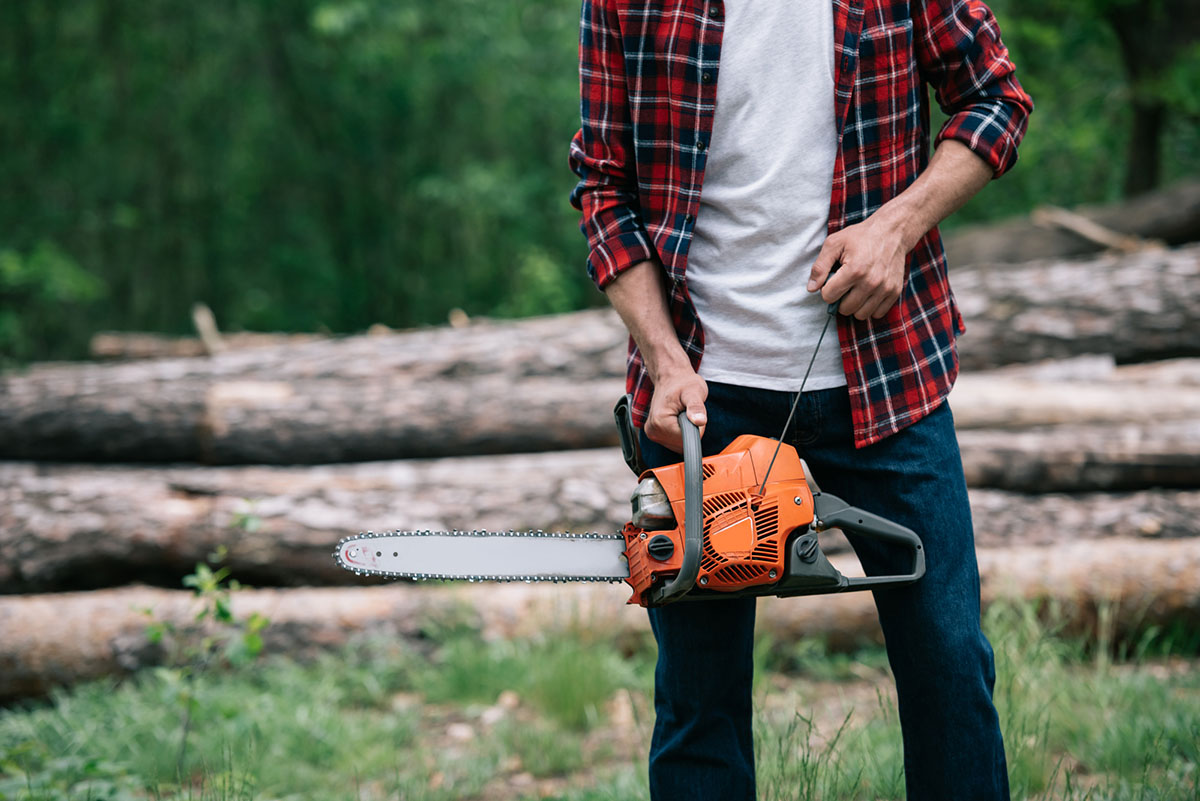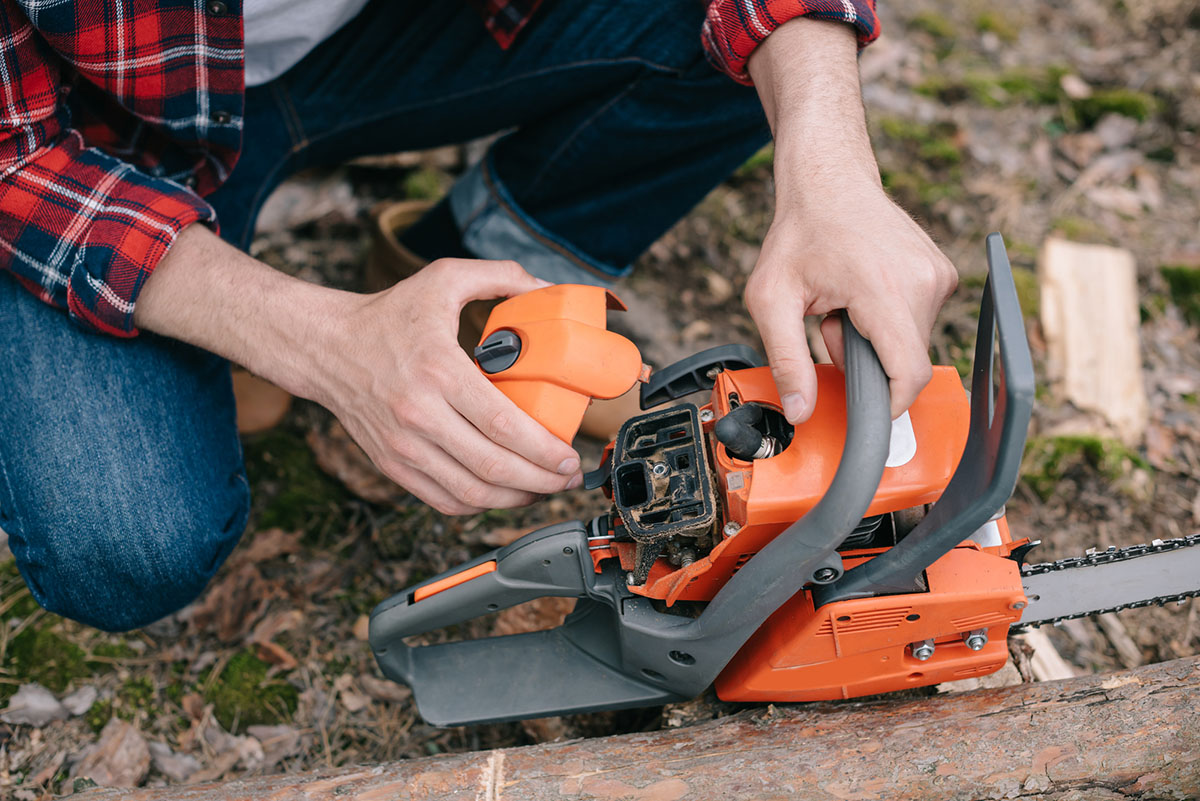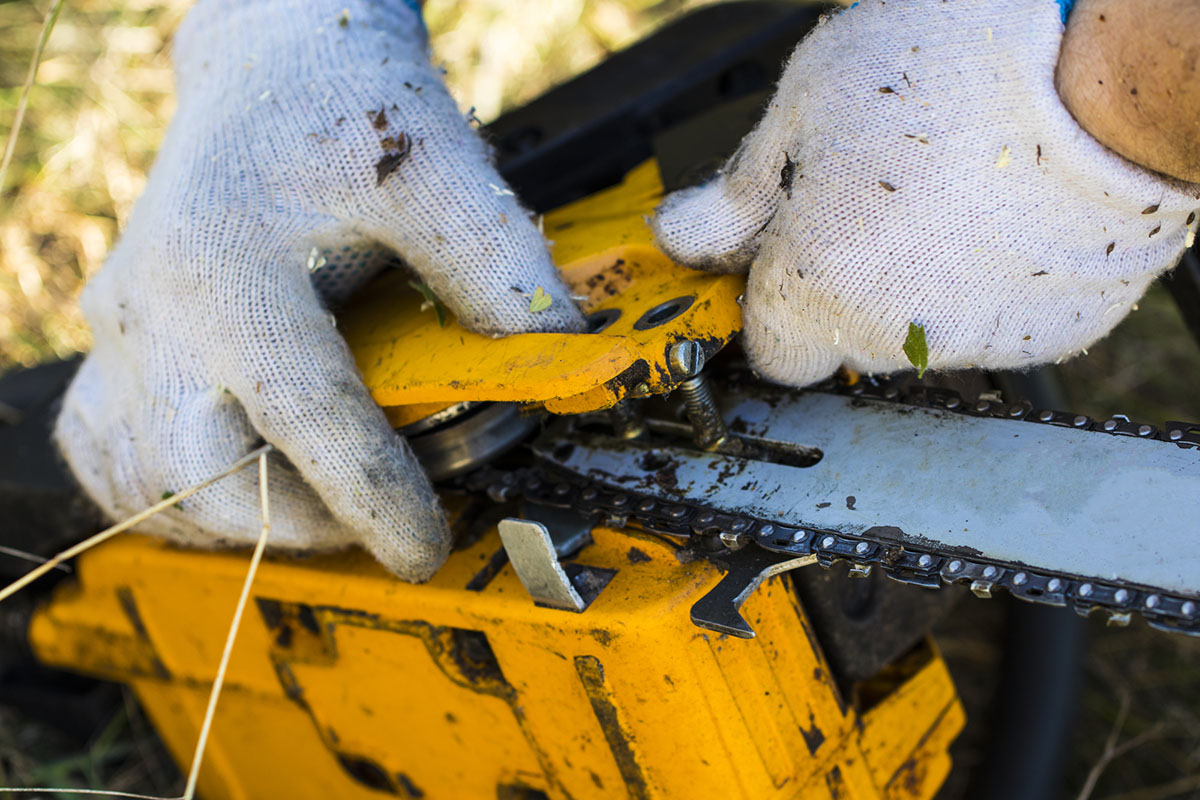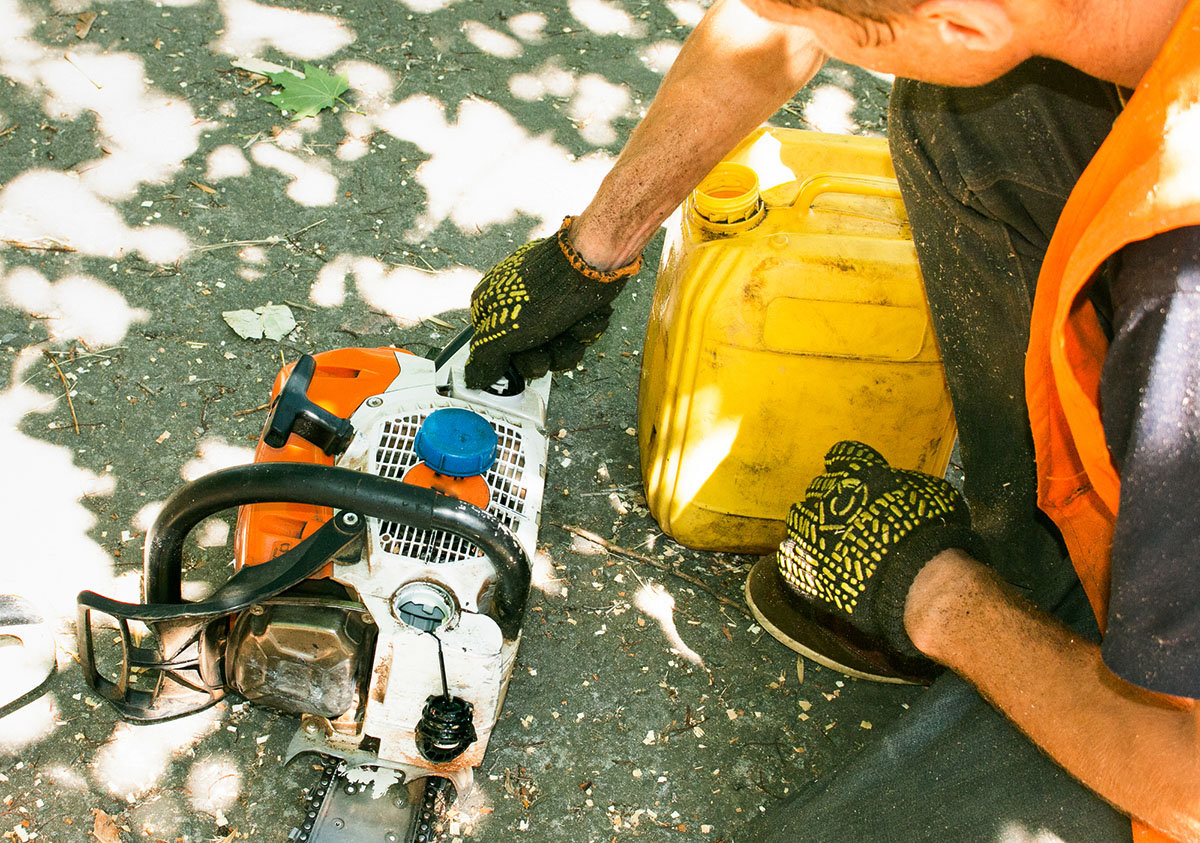

We may earn revenue from the products available on this page and participate in affiliate programs. Learn More ›
Q: My chainsaw won’t start, and I’m not sure what’s wrong with it. What’s the issue, and how can I fix it?
A: A chainsaw is a great tool to clean up fallen trees, trim unwanted branches, and cut firewood. These tools can be stubborn when starting up, especially older models with wear and tear. There are a few different reasons why a chainsaw won’t start, depending on whether it’s a gas or an electric chainsaw.
Before beginning an investigation or troubleshooting the issue, though, always put safety first and operate under the assumption that the chainsaw could start at any time. Keep the saw facing away from people, vehicles, and structures and avoid wearing baggy clothing.
Replace the spark plug.
If your chainsaw has a defective spark plug, it cannot create an electrical current to ignite the system. Remove the spark plug and inspect if it is dirty, cracked, eroded, or damaged. There may also be a heavy carbon buildup or a burned-up electrode.
If the spark plug has one or more of these issues, replace it with a new one. If the spark plug appears fine visually, but you haven’t changed it in a few seasons, replace it anyway.
Clean the carburetor.
A chainsaw’s carburetor mixes air and fuel to start the internal combustion engine. If fuel has been left in the engine for too long, it can become sticky and clog the carburetor, preventing it from starting. If the clog is minor, clean out the carburetor. To unclog a carburetor, drain the fuel, spray the carburetor with a specialized cleaning solution, and wipe it clean.
If cleaning the carburetor doesn’t work, replace it.
If the carburetor is too clogged up to be thoroughly cleaned (or if repeated cleanings don’t get all the buildup out), it may need replacing. It could be damaged or old and no longer functioning.
To test the carburetor, remove the air filter, pour a teaspoon of fuel into it, and pull the starter rope. If the engine starts momentarily and then dies, the carburetor is likely why the chainsaw won’t start. To replace the carburetor, purchase one that is compatible with the chainsaw, then follow the manufacturer’s instructions to switch them out.
Test the ignition coil.

The ignition coil is the device that sends voltage to the spark plug, creating a spark that ignites the fuel and turns on the chainsaw. If the engine is not turning on, then the coil may have become defective, which can happen over time with repeated use. Once you’ve confirmed that the spark plug is not the issue, purchase an ignition coil tester and follow the manufacturer’s instructions. If a spark does not occur during the testing process, it is likely that the ignition coil is defective and needs to be replaced.
Check the recoil starter.
A recoil starter allows the operator to pull up on the starter rope and engage the internal starting mechanisms to turn on the chainsaw’s engine. If the recoil starter is defective or assembled improperly, then the engine cannot start.
To test whether the recoil starter assembly is defective, remove it from the chainsaw to see what’s happening. The pulley system may be stuck and needs to be placed back into its proper position. If you try this and the chainsaw still won’t start, the recoil starter may need replacing.
Replace the rewind spring.

The rewind spring is a part of the recoil starter assembly that rewinds the starter cord after each pull. If, after the initial pull, the cord doesn’t rewind and the engine won’t start, then the issue is likely with a broken rewind spring, and it needs replacing. Some chainsaw models allow you to replace just the rewind spring. On other models, you have to replace the whole recoil starter.
Fix a flooded engine.
A fuel issue is one of the most common reasons why a chainsaw won’t start. If you have been trying to start the chainsaw through the recoil starter system, you may have accidentally flooded the engine with fuel. A common indication the engine has been flooded is the smell of gasoline in the air. If you believe fuel has flooded the chainsaw engine, pull the starter cord several times while holding the throttle, dry and replace the spark plug, and then try starting the chainsaw again.

Tried-and-True Advice
“If you use your chainsaw infrequently like I do, I recommend using a fuel stabilizer. I started adding it to my gas, and it keeps the fuel from deteriorating too quickly. That way, I don’t have to worry about old fuel clogging up the carburetor the next time I need the saw.”
—Paul Rankin, Contributing Writer and Editor
Make sure the choke setting isn’t activated.
Many chainsaws have a choke position that is used to start the saw in cold weather. This setting helps increase the air and fuel mixture’s richness in the carburetor to improve the fuel flow. If the choke is activated in mild or warm weather situations or after the chainsaw has been in use and is warm itself, it can quickly flood the engine as it does not need that amount of heat to start. If you are troubleshooting the chainsaw at a warm or mild temperature, make sure the choke is not activated. If it has been on, the engine may be flooded, which can be resolved using the steps above.
Replace old fuel.

As with many mechanical devices, the quality and quantity of the fuel used in a chainsaw can impact its operation and functionality. Check that your chainsaw is properly fueled so the engine can run. Gasoline will start to deteriorate if left unused and sitting, so if the chainsaw hasn’t been started in a while, be sure to check that old fuel is not collecting inside the chainsaw. If it is, the gas tank needs to be cleaned and refilled with fresh gas.
If you find that your chainsaw still won’t start, you may need to bring it to a specialist or invest in a replacement. Our tested guide to the best chainsaws for backyards, firewood, and more has terrific shopping advice and product recommendations on the subject.
